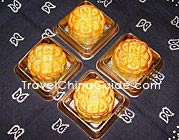Hand-made Noodles
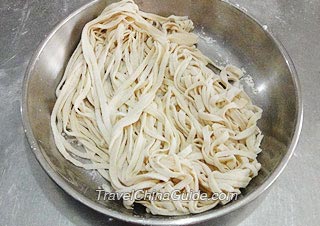 Chinese name: 手擀面条 (shǒu gǎn miàn tiáo)
Chinese name: 手擀面条 (shǒu gǎn miàn tiáo)Characteristics: Chewy, nutritious, and nourishing when made with fragrant rich flour.
In China, noodles have a history of about 4,000 years and are one of the most important staples, especially in northern China. Although many more kinds of noodles appear as time passes, hand-made noodles prevail, because they are so easily made and can be cooked into various dishes. One can boil them and then add in different sauces; minced pork for noodles with minced pork, tomato and egg sauce for tomato and egg noodles, etc., and one can also steam and then fry them with different vegetables and meat to make delicious Chow Mein (stir-fried noodles). Lastly, hand-made noodles are suitable for everyone, including the elderly and children. Enjoy the recipe blow, and you will know how the long and thin noodles are made.
Ingredients:The main ingredient of hand-made noodles is wheat flour. One can also add a little salt and an egg to make the noodles shinier and chewier. |
 |
Methods:
| STEP 1 Put the flour into a basin and, while stirring, pour in some cold water. The flour-to-water ratio is about 10:4.5. One can add more water to get softer noodles or less water to get tougher noodles although soft noodles are generally considered more suitable for the elderly and children. Salt and a beaten egg are added and stirred in thoroughly. Then knead the combined flour mixture into a dough. |
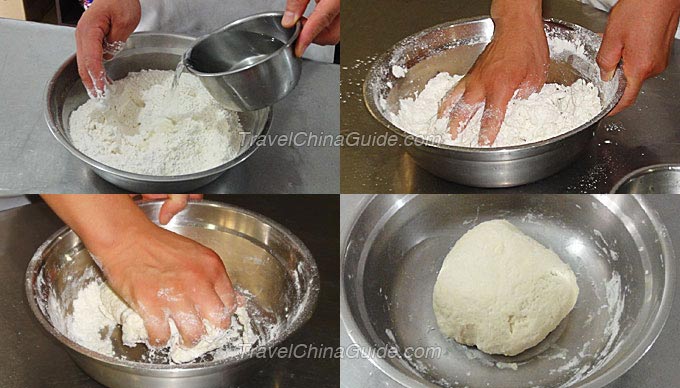 |
| STEP 2 Take the dough out of the basin and knead again thoroughly. To get chewy noodles, one should knead the dough for a comparatively longer time until its surface is very smooth and there are a few or no air bubbles inside. Wrap the dough in cling film and let it rest for about 30 minutes. |
 |
| STEP 3 Knead the dough thoroughly again and shape it into a ball. Dust some flour on a cutting board and flatten out the ball of dough. Keep flattening the dough with a rolling-pin. Then wrap the rolling-pin with the dough and roll to make the dough thinner. After a while, unwrap the rolling-pin and dust some flour on the dough. Then wrap the rolling-pin again from the other direction and continue rolling. Keep doing this for more times in all directions until a thin circle of dough has been made. The dough should be about 1mm thick. One can roll more times to make it thinner or fewer times to make it thicker. The elderly and children may prefer thinner noodles. |
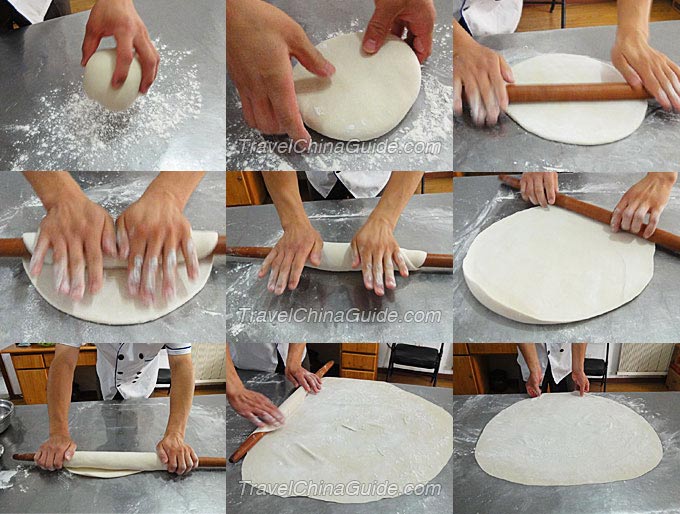 |
| STEP 4 Dust flour onto the sheet of dough and fold it into multiple layers. Cut the layers into thin strips. The width of the strips is based on one’s preference. Dust some flour on the strips and loosen them. |
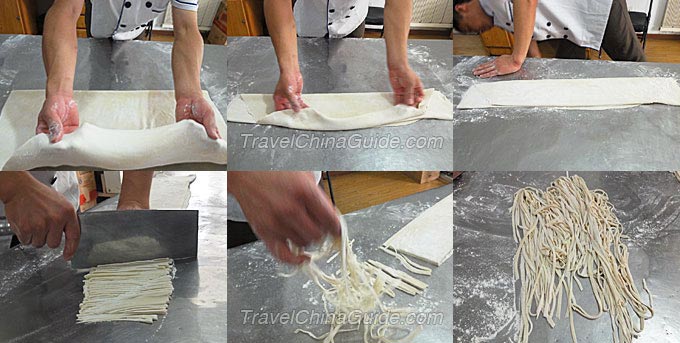 |
| The hand-made noodles are now ready to be cooked in your favorite way! |
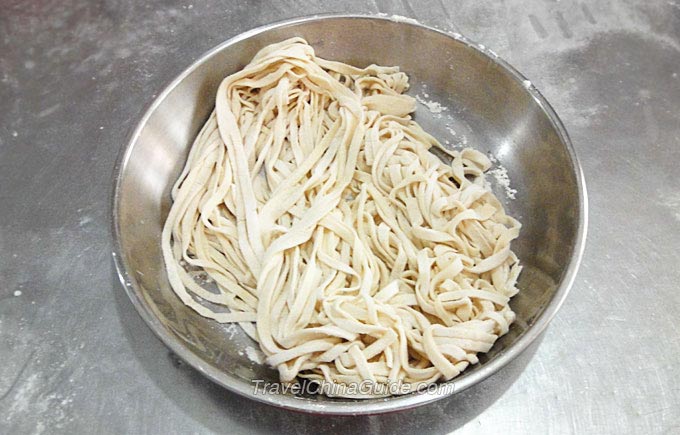 |
Learn to make Chinese dishes with hand-made noodles:
-
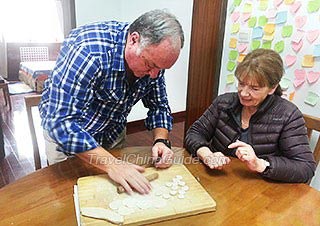
Thomas and Susan Making Dumplings
On March 28, 2013, Mr. Thomas & Ms. Susan from the United Kingdom had a visit to a local family with our guide during their tour in Xi'an. They both enjoyed a great meal there. Anne learnt to cook Sichuan Twice-Cooked Pork Slices and Hand-made Noodles. And they learnt together to make dumplings and another similar staple food – Pan Fried Dumplings. It was interesting that they couldn’t tell any difference between the “dumplings” at the first, which not only the dumplings fried in the pan, but also the crescent-shaped ones with the two outer sides open. -

Our Guests Dining in a Local Family
On Jun. 4, 2012, Mr. Eric & Ms. Angela from the United States visited a local family in Xi'an. It seems that the couple is so affectionate to Chinese wheaten food that they learned to cook Chinese Pancakes and Hand-made Noodles at the same time. They commented that it was the most exciting experience of their China tour.See details at Eric and Angela's Feedback and Video -
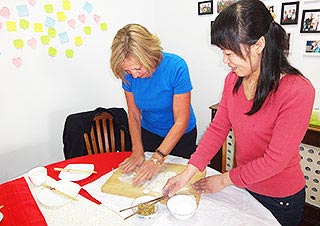
Ms. Heather Making a Doughball
On Mar. 25, 2012, Ms. Heather & Mr. Robert from New Zealand experienced our distinctive family visit tour in a local family of the ancient capital city Xi'an. Being Chinese food lovers especially keen on various wheaten foods, they learned to cook their favorites - Chinese Dumplings, Hand-made Noodles, and Shredded Pork with Garlic Sprouts in a pure Chinese environment for the first time in their life.See details at Ms. Heather's feedback






